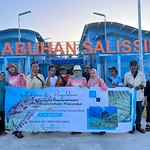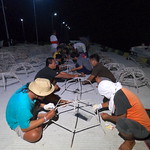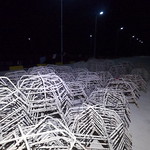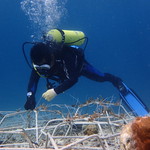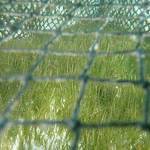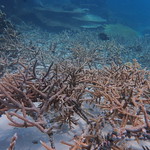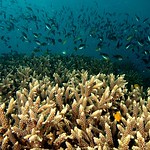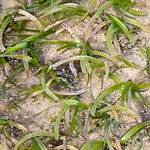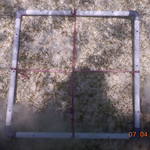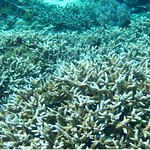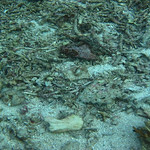Small Grant Login

0% of this project has been implemented.
March 1, 2021
May 1, 2024
Project Summary
Establish a Marine Protected Area for sea turtles in West Sulawesi, Indonesia in collaboration with the local authorities. A top priority of the project is to conserve, protect and even increase the coral reef and seagrass areas of this pristine archipelago in the Makassar Straits, 650km north of Bali. Sea turtles are dependent on coral and seagrass habitats for their survival because they provide them with food, shelter and nursery grounds. Another priority is to train local community members to monitor and manage the condition of the seagrass and coral reef cover and to provide them with income other than from fishing, such as cultivating seaweed.
Objectives
Research: To establish a baseline of coral, seagrass and sea turtles surveys have already been conducted in this area.
Practice: Coral reef transplantation to increase the total area of coverage from 13% to 43% in one location and from 7.7% to 25% at a second location. Seagrass transplantation to increase total area of coverage from 26 to 30 hectares in one location and from 1.18 to 2.5 hectares at a second site.
Outreach: Recruitment of local community to assist in monitoring and evaluating the condition of the transplanted coral and seagrass. Lobbying provincial authorities to designated target area as an MPA.
Key Documents
Project location - Indonesia, Asia
Field Reports
Transplanted coral a massive success
May 13, 2023
Upon revisiting the rehabilitation site in May, the project team found that the growth rate of the 400 transplanted coral spiders was 19%. The corals in Gusung Duian and Salingassan had survival rates of 97% and 82% respectively and grew between 0.48 and 1.61cm.
In terms of seagrass, the 1,500 seeds that were transplanted in Salissingan island and an additional 1,000 seagrass seeds from Gusung Durian, did not show the same levels of success. Reasons cited included potential consumption by sea turtles, strong currents, and sedimentation.
There has been some amazing progress as seen in the images below. The research team will revisit the seagrass project in 2023 and monitor the growth and success of the project.
Click on each thumbnail to enlarge and read the captions
Planting a forest under the sea
August 29, 2022
During August work was started on restoring seagrass meadows in Salissingan Island. Substrate preparation and frame installation was carried out and with the participation of the local community the seagrass was primed for transplanting. Over 1500 seagrass have now been transplanted and over the next couple of months we will start to see it develop.
Watch how our team achieved this transplantation
Helping to restore the marine ecosystem and support turtle conservation
August 1, 2022
With our partners Faculty of Marine Science and Fisheries (FIKP), Universitas Hasanuddin, the establishment of a Marine Protected Area (MPA) is now underway at Balabalakang Archipelago, West Sulawesi, Indonesia. More than 600 ‘spiders’ have been created and installed using thousands of coral fragments taken from surrounding areas. Our research team will regularly perform Monitoring and Evaluation (M&E) to ensure that the results of transplanted corals show good growth trends.
Enjoy watching this restoration
New seagrass and coral reef rehabilitation site
December 31, 2021
The Bala-balakang archipelago, a turtle and marine protected area, has been determined as the site for establishing a seagrass and coral reef rehabilitation area. The donor for the coral will come from branching and foliose lifeform, especially the Acropora, Echinopora and Montipora species (see photos), and will be taken from the island of Salissingan and Durian coral reefs. Whilst the seagrass seeds (Cymodocea, Halodule and Thalassia) will originate from Maskassar-pangkep in the Spermonde archipelago and will need to be transported in a water container, via boat for more than 24 hours.
During October and November iron was purchased for the construction of hexagonal-shaped structures termed “spiders”. In total 1000 modules will be required for this project, with 200 already constructed. The spiders are used for coral transplantation, protection and restoration.
Click the thumbnail to enlarge it and read the captions.
Baseline Data Gathered
May 19, 2021
The local partner formed a team to survey the seagrass and coral cover of these distant islands. A rapid assessment of seagrass cover was conducted by placing at randomly selected plots a 50cm x 50cm quadrant made from PVC pipes (see photo). Seagrass density was measured and the different species of seagrass were recorded within the quadrants across the survey site. In only one site was seagrass cover 30% which is considered medium cover. The team determined that seagrass was present in low density and recommended transplantation.
Similar methodology and results were determined for coral in 14 different areas along the same set of islands. It was concluded that coral reef conditions in the area suffered from destruction, especially on the flats; however, reef condition on the slope was in comparatively good condition. The team determined that 9 sites out of the 14 were candidates for coral restoration.








